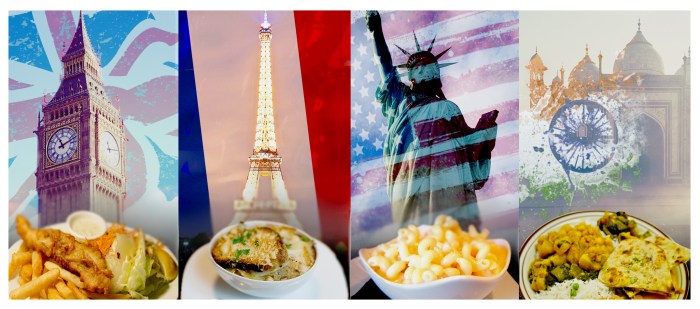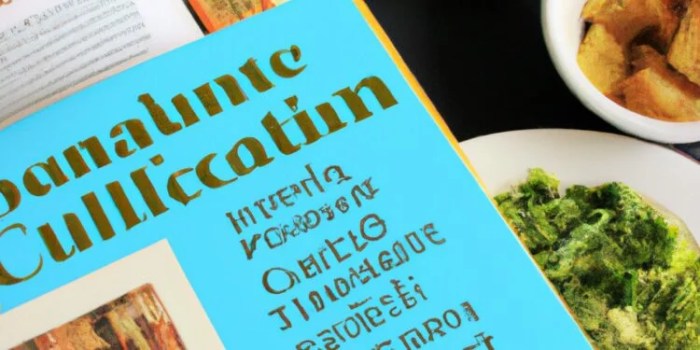
Origins and Evolution of Traditional Culinary Cultures

Traditional culinary practices have been shaped by a multitude of historical and cultural factors. The availability of local ingredients, influenced by geography and climate, has played a significant role in the development of distinct culinary traditions around the world. Cultural exchanges, migrations, and technological advancements have also contributed to the evolution of these culinary practices.
Influence of Geography and Climate
The geographical location and climate of a region significantly impact its culinary culture. For instance, coastal regions often have a cuisine rich in seafood, while inland areas may rely more on meat and dairy products. Similarly, tropical climates favor the use of fresh fruits and vegetables, while colder climates may necessitate the preservation of food through techniques like pickling or smoking.
Influence of Cultural Exchange
Cultural exchanges have played a pivotal role in the dissemination of culinary ideas and techniques. Trade routes, migrations, and conquests have facilitated the transfer of ingredients, cooking methods, and culinary traditions across borders. For example, the introduction of tomatoes, potatoes, and chili peppers to Europe from the Americas had a profound impact on European cuisine.
Influence of Technology
Technological advancements have also influenced the evolution of traditional culinary cultures. The invention of refrigeration, for instance, allowed for the preservation of perishable foods, expanding the availability of ingredients and enabling the development of new culinary techniques. Similarly, the introduction of cookware made from new materials, such as cast iron and stainless steel, has altered cooking methods and facilitated the creation of new dishes.
Regional Variations in Traditional Culinary Practices

Traditional culinary culture around the world – Traditional culinary cultures exhibit distinct variations across different regions of the world, reflecting unique geographical, historical, and cultural influences. These variations manifest in the use of local ingredients, cooking techniques, and cultural preferences that shape the culinary identities of each region.
Asia, Traditional culinary culture around the world
Asian cuisines are renowned for their diverse flavors and vibrant ingredients. The use of rice, noodles, and soy products as staples is prevalent across many Asian countries. Spices and herbs, such as ginger, garlic, chili peppers, and lemongrass, play a significant role in adding depth and complexity to dishes. Stir-frying, steaming, and wok cooking are common techniques employed to preserve the freshness and nutrients of ingredients.
Europe
European cuisines are characterized by their emphasis on fresh, seasonal ingredients and refined cooking techniques. The use of dairy products, such as cheese, butter, and cream, is common in many European dishes. Bread, pasta, and potatoes are often served as staples. European cuisines also exhibit regional variations, with influences from Mediterranean, Slavic, and Nordic culinary traditions.
Africa
African cuisines are known for their bold flavors and use of aromatic spices and herbs. Grains, such as millet, sorghum, and maize, are widely used as staples. Stews, soups, and grilled meats are common dishes in many African countries. The use of fermented ingredients, such as fufu and injera, is also prevalent.
Americas
American cuisines are influenced by a blend of indigenous, European, and African culinary traditions. The use of corn, beans, and chili peppers is common in many dishes. Barbecue, grilling, and smoking are popular cooking methods in the Americas. Regional variations include Mexican, Cajun, and Peruvian cuisines, each with its unique flavors and ingredients.
Cultural Significance of Traditional Culinary Practices
Traditional culinary practices hold immense cultural significance, serving as cornerstones of cultural heritage and identity. Food traditions are deeply intertwined with social customs, religious beliefs, and community values, reflecting the unique tapestry of a culture.
Preserving Cultural Heritage and Identity
Traditional culinary practices play a pivotal role in preserving cultural heritage. They embody the knowledge, skills, and traditions passed down through generations, connecting people to their past and providing a sense of continuity. By safeguarding these practices, communities ensure the preservation of their unique cultural identity and heritage.
Reflection of Social Customs and Values
Food traditions often mirror social customs and values. For example, in many cultures, communal meals are a central part of social gatherings, fostering a sense of belonging and togetherness. Similarly, the use of specific ingredients or cooking methods can reflect religious beliefs or cultural taboos.
Importance for Cultural Continuity and Sustainability
Traditional culinary knowledge is essential for cultural continuity and sustainability. It provides a roadmap for future generations to understand and appreciate their cultural heritage. By preserving and transmitting this knowledge, communities ensure that traditional culinary practices continue to thrive and contribute to cultural sustainability.
Preservation and Transmission of Traditional Culinary Knowledge: Traditional Culinary Culture Around The World
Preserving and transmitting traditional culinary knowledge is crucial for safeguarding cultural heritage and ensuring the continuity of culinary traditions. Various methods and initiatives play a vital role in passing on culinary skills, recipes, and cultural significance to future generations.
Storytelling and oral traditions have been integral to the transmission of culinary knowledge for centuries. Elders and experienced cooks share their knowledge through stories, anecdotes, and demonstrations, preserving cultural narratives and culinary techniques. Apprenticeship programs provide hands-on training, where aspiring cooks learn from master chefs, immersing themselves in the nuances of traditional practices.
Role of Technology in Preserving Culinary Knowledge
In the modern era, technology has emerged as a powerful tool for preserving and transmitting culinary knowledge. Online platforms, digital archives, and recipe databases allow for the documentation and dissemination of traditional recipes and cooking techniques. Social media and online communities foster connections among culinary enthusiasts, facilitating the exchange of knowledge and cultural insights.
Challenges and Opportunities in Safeguarding Traditional Culinary Practices
Globalization and modernization pose challenges to the preservation of traditional culinary practices. Changing lifestyles, dietary habits, and the availability of processed foods can erode the transmission of traditional knowledge. However, these challenges also present opportunities for innovation and adaptation. Chefs and culinary experts are reimagining traditional dishes with contemporary techniques and ingredients, while preserving the essence of cultural heritage.